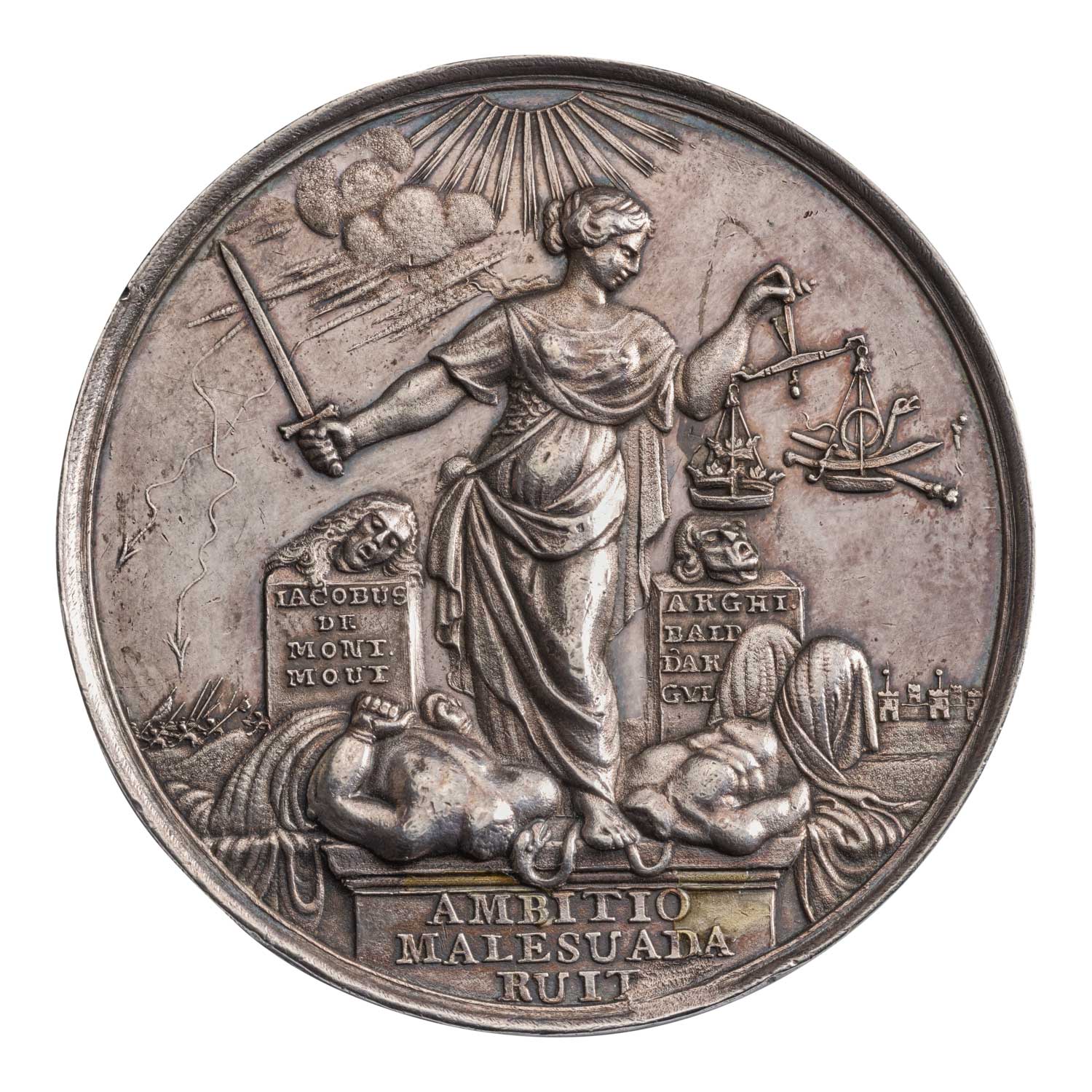Coins and medals, timeless relics of our shared history, stand as enduring testaments to bygone eras. Beyond their tangible worth, they embody the very essence of cultural heritage and historical narrative. Among these treasures, the 1685 Dukes of Monmouth and Argyle Beheaded Medal stands as a compelling emblem of its era. Its intricate design and poignant symbolism beckon us to explore its rich tapestry of significance.
In this article, we embark on a journey through time, unraveling the enigmatic allure of this remarkable numismatic specimen. With each detail meticulously crafted, this medal serves as a window into the tumultuous events of its epoch. From the defiance of the Duke of Monmouth to the somber aftermath of his fate, its story resonates with echoes of political intrigue and societal upheaval.
Join us as we navigate the labyrinthine corridors of numismatic lore, uncovering the secrets concealed within this venerable artifact. Together, we shall illuminate its historical context, decipher its intricate motifs, and assess its esteemed value within the realm of rare coin collectors. Prepare to be captivated by the tale of the 1685 Dukes of Monmouth and Argyle Beheaded Medal—a testament to the enduring legacy of numismatics.
Unveiling the Historical Tapestry
To truly grasp the significance encapsulated within the 1685 Dukes of Monmouth and Argyle Beheaded Medal, one must embark on a journey through the annals of history. The late 17th century emerges as a canvas splattered with the hues of political strife and religious discord, a backdrop against which this illustrious artifact was forged. It was a time of upheaval, with King James II reigning over a Britain ensnared in the throes of turmoil.
Chronicles of the Monmouth Rebellion
Central to the genesis of the 1685 Dukes of Monmouth and Argyle Beheaded Medal stands the Monmouth Rebellion—a seminal chapter in British history. In 1685, James Scott, the audacious scion of King Charles II, dared to challenge the authority of his uncle, James II, igniting a rebellion that reverberated across the realm. Yet, amidst the fervor of defiance, the rebellion met a grim fate, with Monmouth himself meeting the cold embrace of execution.
Crafting the Symbolism
Behold the intricate tableau etched upon the 1685 Dukes of Monmouth and Argyle Beheaded Medal—a testament to the artistry and political messaging of its time. The obverse bears the solemn visages of James Scott, Duke of Monmouth, and Archibald Campbell, Earl of Argyle, united in both life and martyrdom. Meanwhile, the reverse unveils a harrowing scene of beheading, a stark reminder of the grisly end that awaited those who dared challenge authority.
Echoes of Historical Significance
Embedded within the gleaming metal of the 1685 Dukes of Monmouth and Argyle Beheaded Medal lies a potent distillation of historical import. It stands not merely as an artifact, but as a tangible relic of an era steeped in political intrigue and religious fervor. This medal serves as a poignant reminder of the fragility of power and the enduring echoes of rebellion, encapsulating the tumultuous spirit of late 17th-century Britain.
A Coveted Rarity
Enshrined within the hearts of collectors, the 1685 Dukes of Monmouth and Argyle Beheaded Medal beckons with its allure of rarity and uniqueness. Its historical significance intertwines with its exquisite design to create an object of desire coveted by numismatists worldwide. Like a rare gem gleaming amidst a sea of common stones, this medal commands attention and reverence.

Unlocking its Value
Valuing the coin/medal demands a nuanced approach, balancing historical significance with market demand. Consultation with esteemed numismatic authorities is paramount to unraveling its worth, considering factors such as condition, provenance, and prevailing market trends. Through careful scrutiny, the true value of this esteemed artifact emerges from the mists of time.
Preservation as an Imperative
Guardians of history, collectors bear the solemn duty of safeguarding the integrity of this medal. Proper preservation techniques, including meticulous handling and storage, ensure its longevity for generations to come. By shielding this relic from the ravages of time, collectors become custodians of a tangible link to our shared past.
Embarking on a Numismatic Odyssey
Coin and medal collecting transcend mere hobbyism, evolving into a passionate odyssey through the corridors of time. As enthusiasts delve into the depths of history, each acquisition becomes a cherished chapter in their personal narrative. Whether novice or seasoned aficionado, the pursuit of numismatic treasures promises an enriching journey of discovery and enlightenment.
Conclusion
The 1685 Dukes of Monmouth and Argyle Beheaded Medal is a remarkable artifact that encapsulates a pivotal moment in British history. Its design, historical significance, and rarity make it highly sought after by collectors. As you explore the world of numismatics, take the time to appreciate the stories and history behind each coin and medal, for they are not just pieces of metal but windows into the past.

